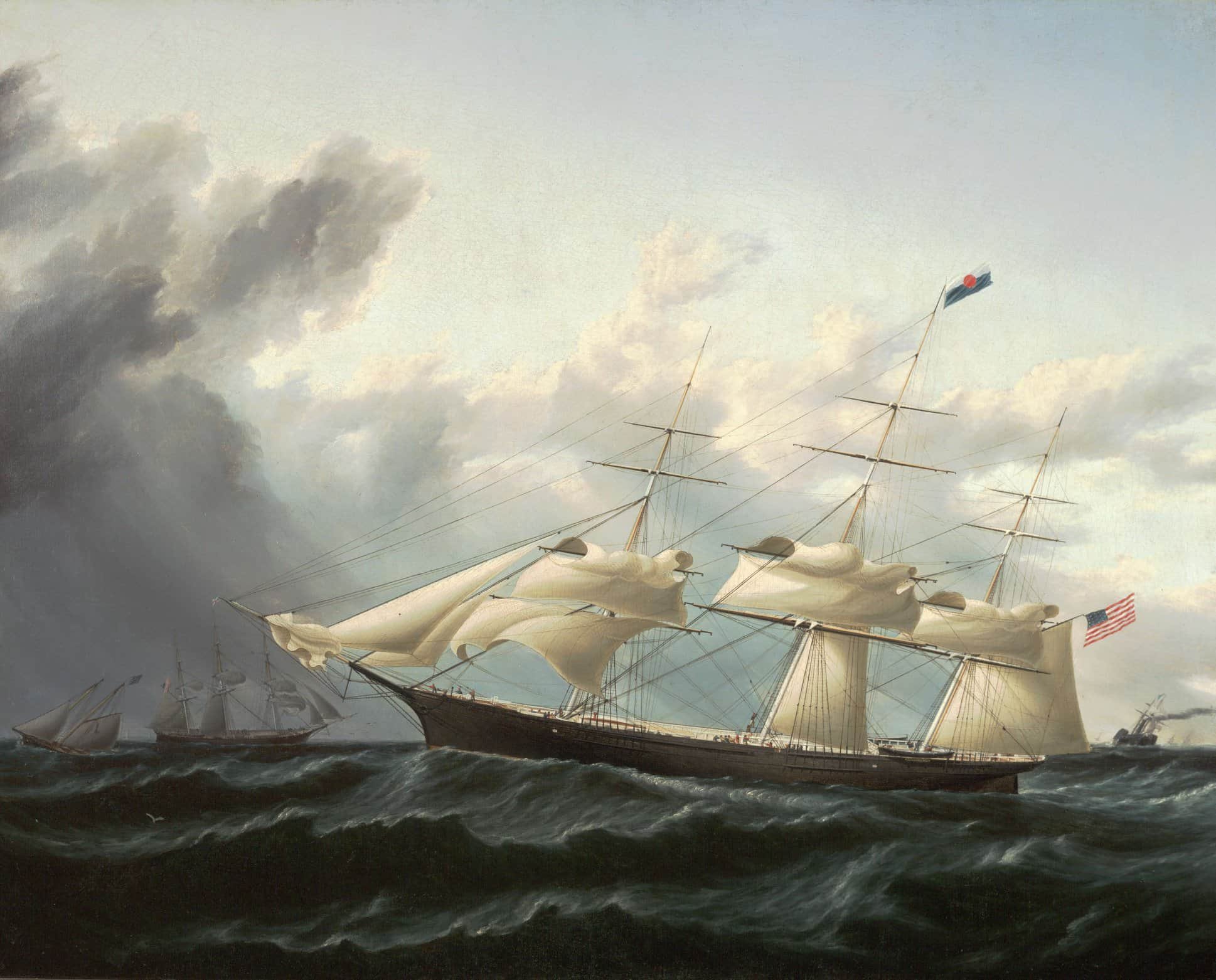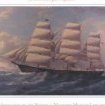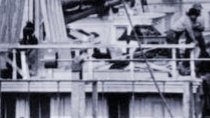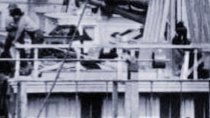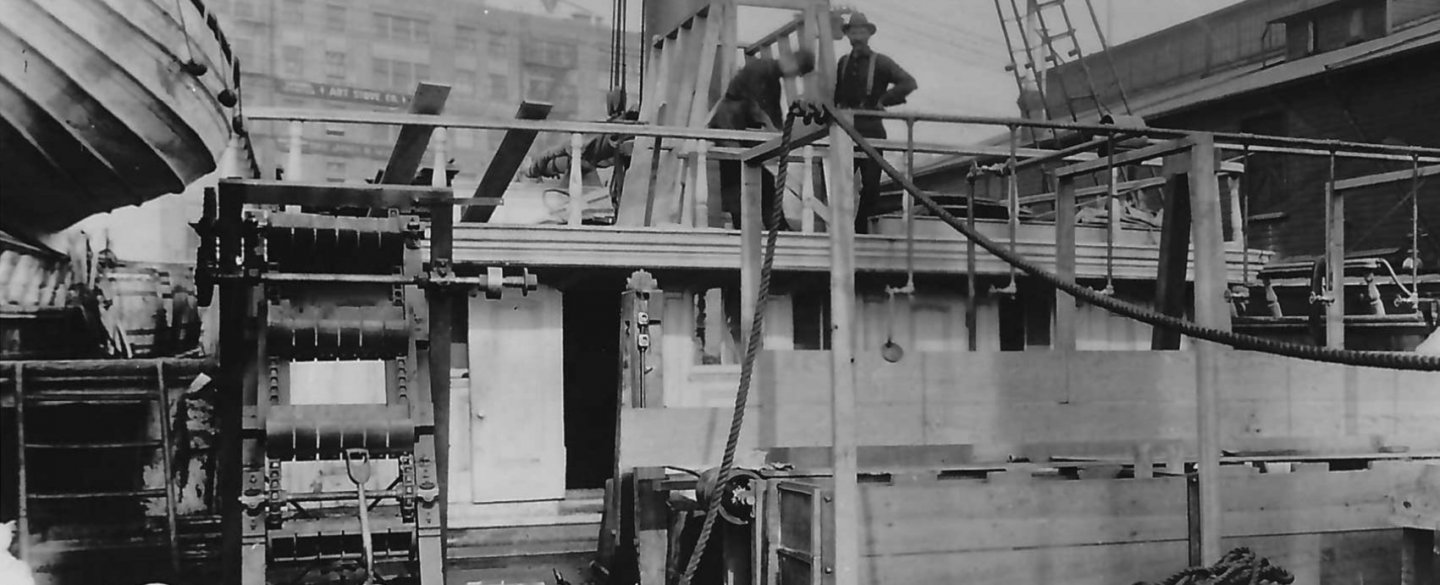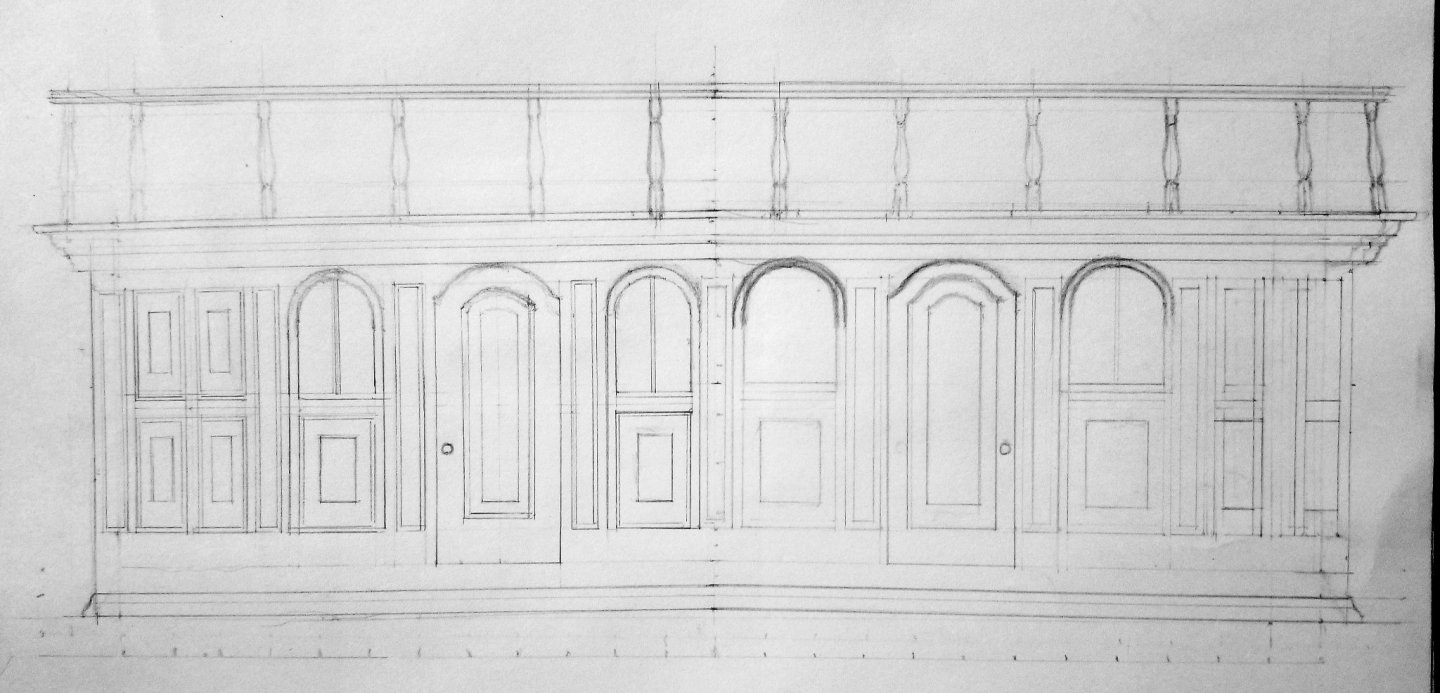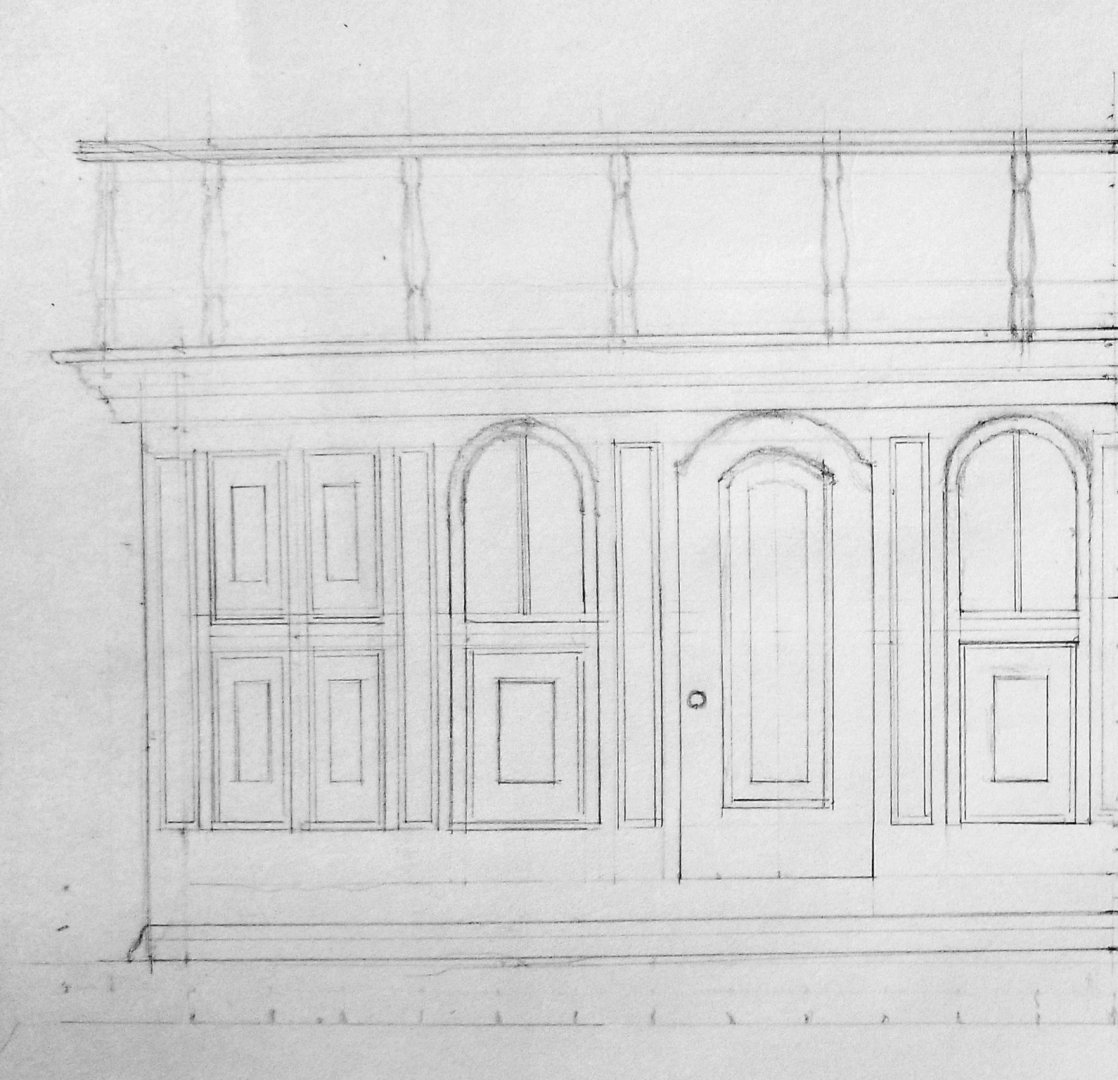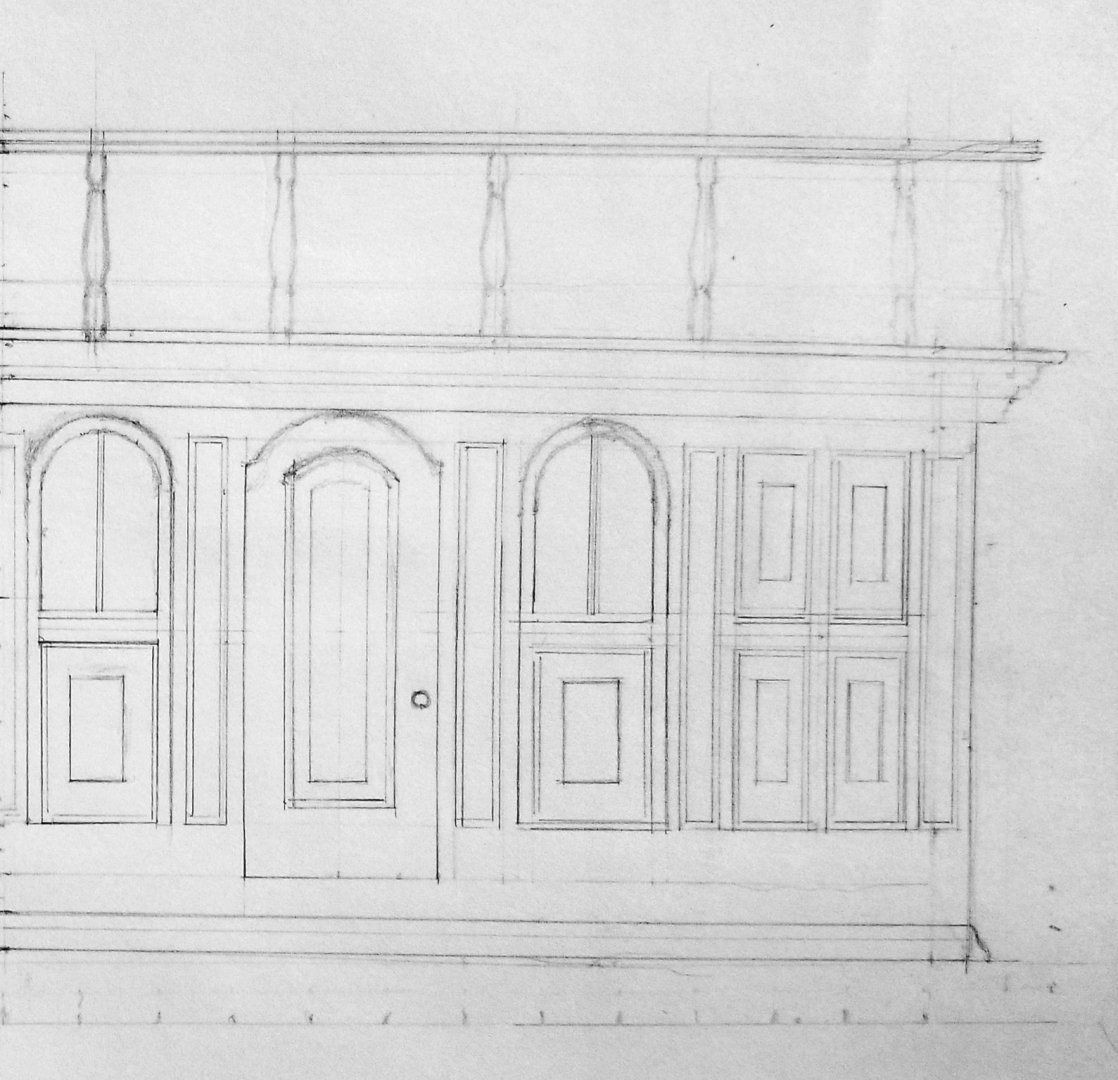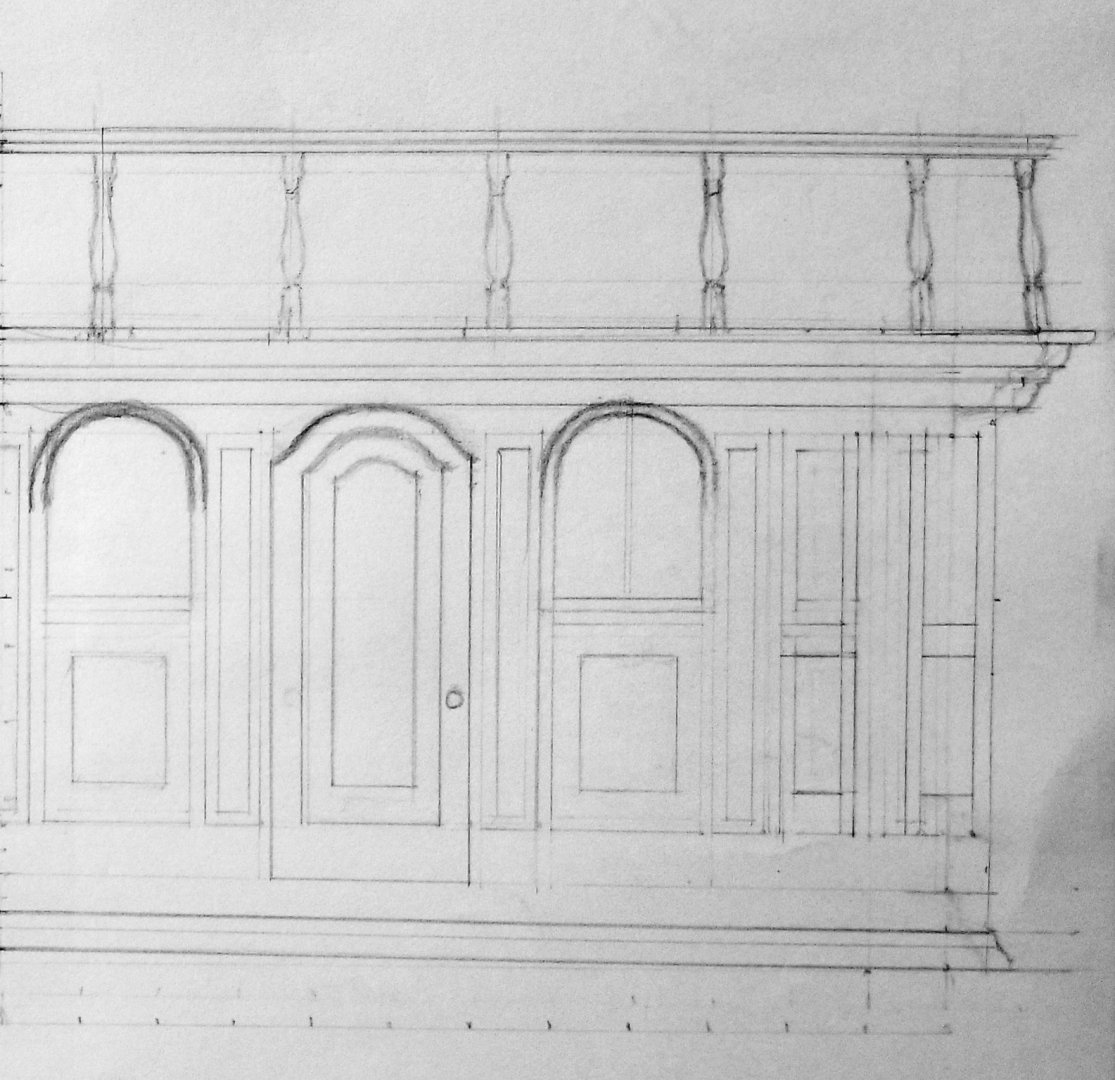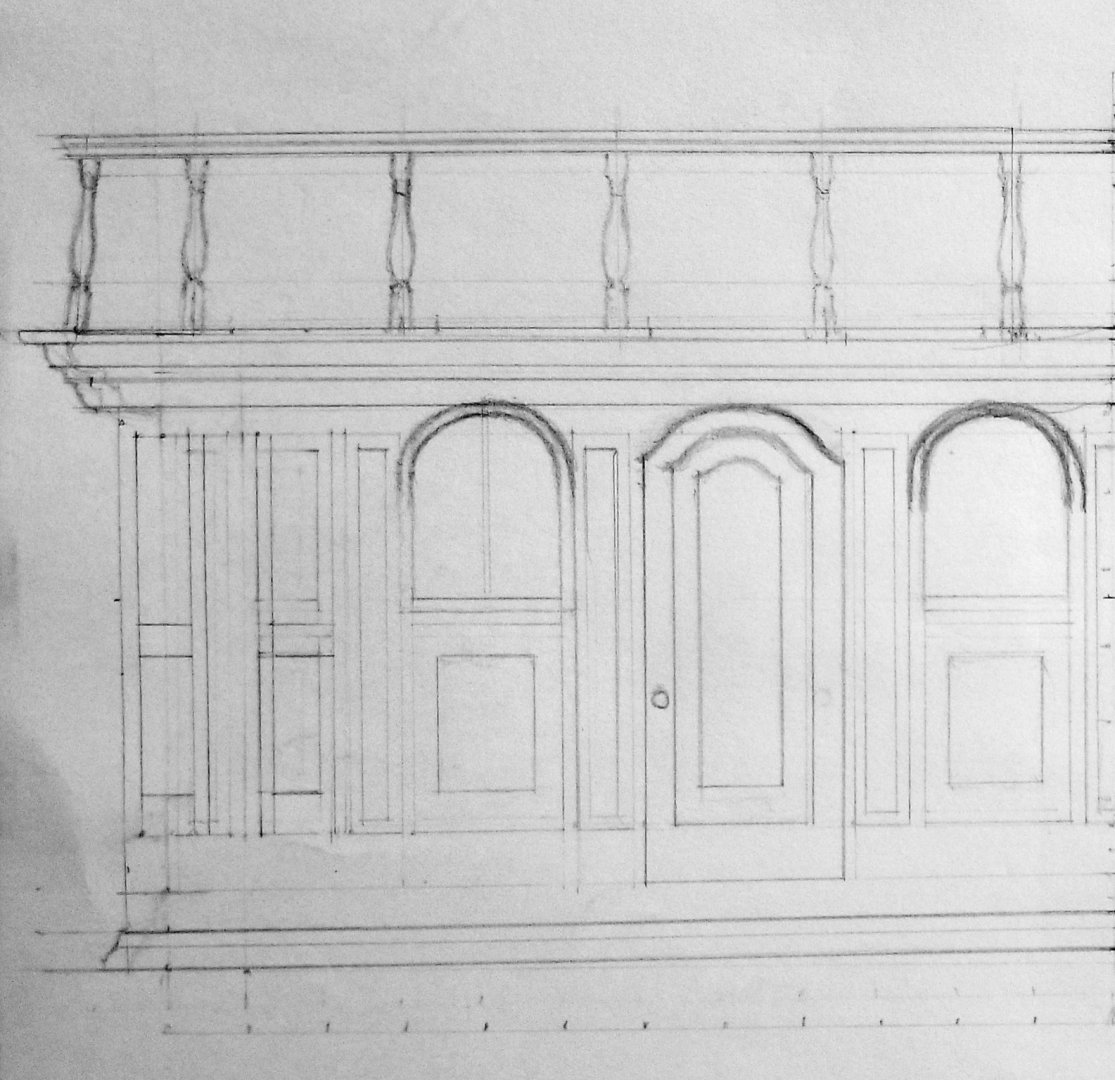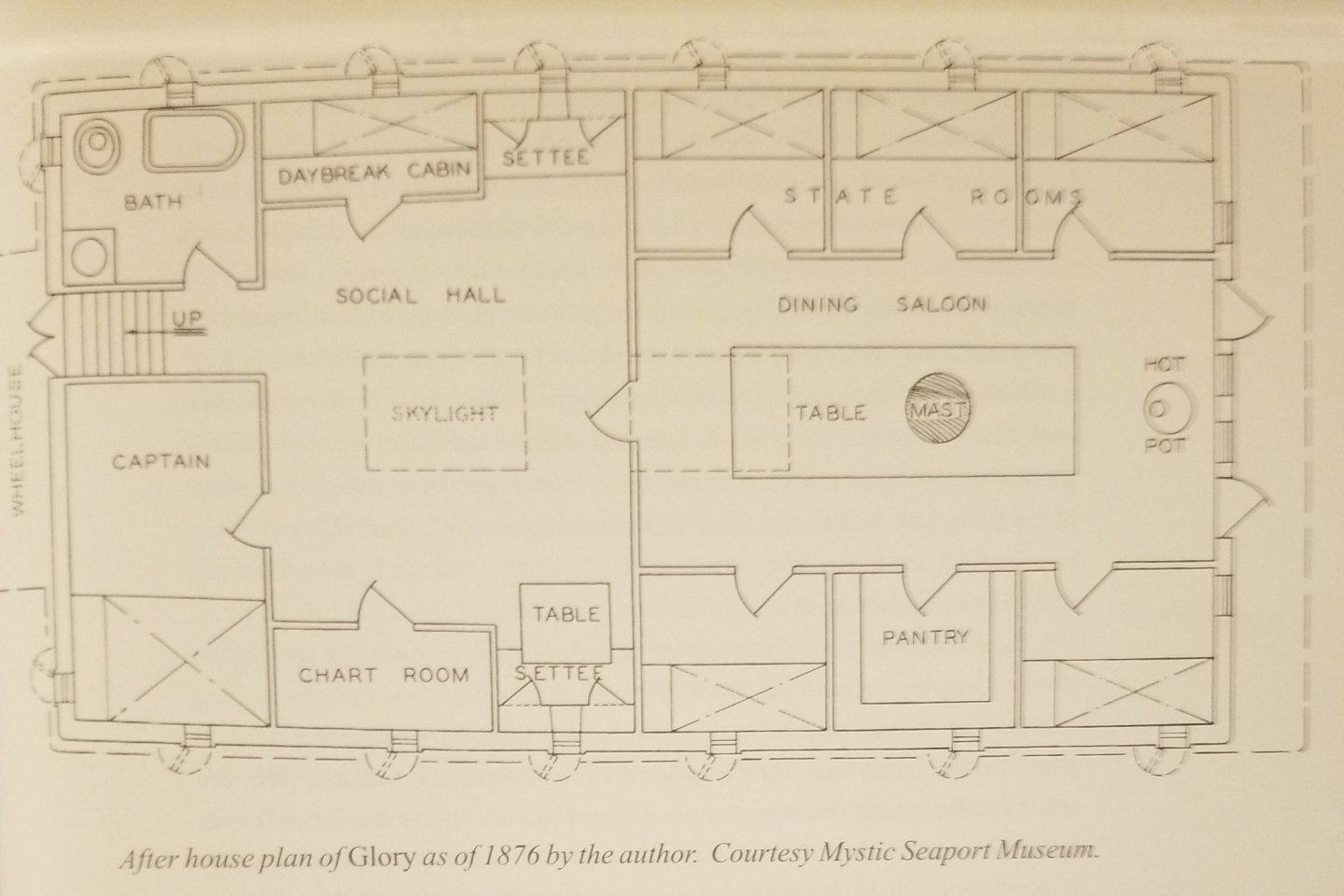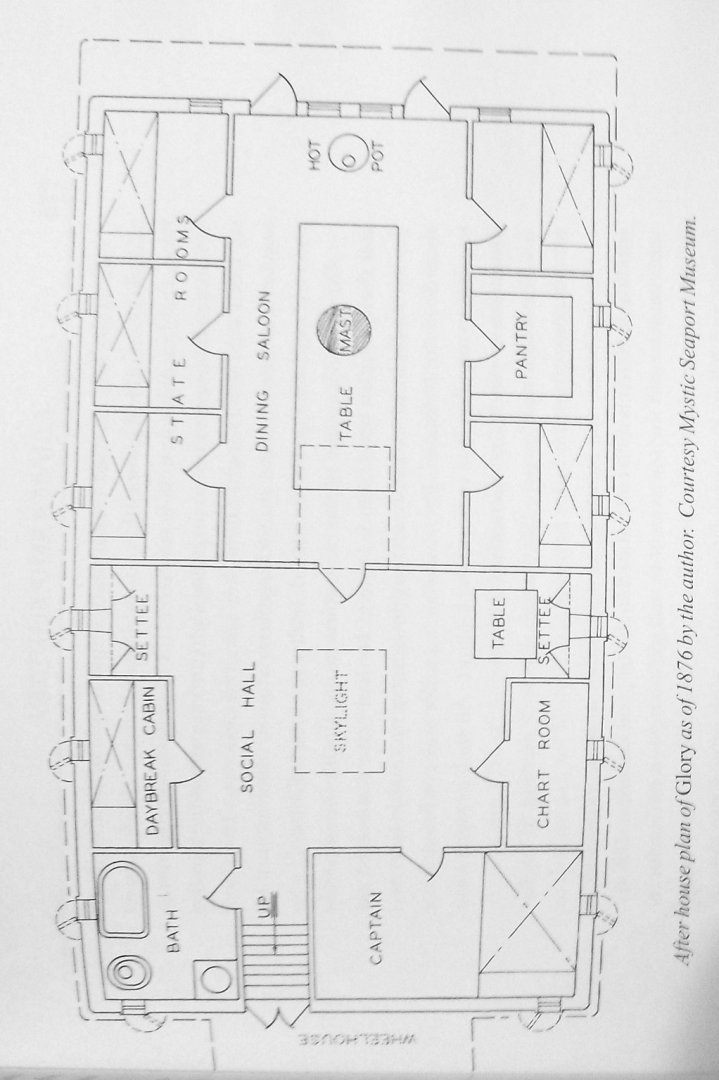-
Posts
2,168 -
Joined
-
Last visited
Content Type
Profiles
Forums
Gallery
Events
Everything posted by ClipperFan
-
Rob, Vladimir, FINALLY! After over 12 long years of intense, careful research, I have produced what I consider my finest print of Donald McKay's1869 Medium Clipper "GLORY of the SEAS" hull. Is it perfect? Certainly not but I've come to accept that nothing in life truly is. But there's also this thing in life called the "relentless pursuit of perfection" in which nothing is ever truly finished. I will say this. Every possible, quantifiable, measurable property has been meticulously reproduced in the exacting scale of 1:96th (1/8th inch = 1 foot) identical to Rob's model in production now. The first print Staples did is more clear than this but some of the lighter work was barely visible. It also has a future copywrite date by mistake. This image produced by Staples has been darkened more than the first, which has advantages and drawbacks. All elements are now clearly visible but it blurs out the delicate work around the Bow. I'm mailing out both prints to Michael Mjelde in duplicate so he can forward copies to his Shipwright buddy Ron Haug for his evaluation. I have printed enough copies to share one of each with Rob and Vladimir, just PM me your addresses. While this is about a 43" long print, it's actually not terribly tall and will fit easily into a mailing tube. I can also email the pdf & jpg images as well.
- 3,560 replies
-
- clipper
- hull model
-
(and 2 more)
Tagged with:
-
Rob, if you can, enlarge the 1869 East Boston fitting out scene. That's about the best I've seen. You can see brackets for both the Wheelhouse and Rear Carriage House.
- 3,560 replies
-
- clipper
- hull model
-
(and 2 more)
Tagged with:
-
Rob & Vladimir, That's amazing, If I didn't know better, I would think I'm looking at the same model! It's indeed a testimony to our groups combined research & to both of your incredible modeling skills.
- 3,560 replies
-
- clipper
- hull model
-
(and 2 more)
Tagged with:
-
Rob, agreed. My bet would be that these ornamental outer brackets would mirror those that are just barely visible on the front sides of the original rear Wheelhouse. When I'm done with the Rear House, I'll work on it.
- 3,560 replies
-
- clipper
- hull model
-
(and 2 more)
Tagged with:
-
Vladimir, first thanks for your appreciation of my drafting efforts. I deeply appreciate it. I'm in the process of redoing my large sketch (yet again). I've redone the 11 stanchions and it now much more closely matches images in the pics. Thank you Rob for making me review the post count one last time. My revisions will also include a deeper lower molding but comparisons I've seen seem to show that the ornamental soffett below rooftop is slightly deeper than the blue molding at the base of the house. Doors and windows now align equally.
- 3,560 replies
-
- clipper
- hull model
-
(and 2 more)
Tagged with:
-
Rob & Vladimir, I think I've finally calculated correct spacing for front 11 stanchions. Starting with 26', outer 4 are 1 & 1/2' apart for a total of 3', leaving 23', inner 3 are 2 & 1/2' apart for a total of 5'. 23' - 5' is 18' ÷ 6 = 3' each. When I get home from wife's dental appointment, I will recheck my math and sketch it out, it should work. Also, I looked into the dark area above the door and there's definitely a small area above it, probably 6" of uninterrupted space. Also the windows appear to flatten out to remain aligned with top of the doors. I think we're getting closer to 'nailing this down.'
- 3,560 replies
-
- clipper
- hull model
-
(and 2 more)
Tagged with:
-
Rob, since there are no visible door hinges on the right side, where you'd expect them to be, my impression is that these are indeed sliders. I once lived in a Century old home with fantastically large over 7' tall ornately carved heavy oak doors. They were hanging sliders with ornate round glass door knobs. Another factor which makes the original ornateness of the wooden carving of Glory's structure is what appears to be many layers of paint over the decades.
- 3,560 replies
-
- clipper
- hull model
-
(and 2 more)
Tagged with:
-
Vladimir, I agree with both of your points. The very upper edge of the house is in shadows, so it's hard to make out specific details. From a design viewpoint, it would make sense that major elements such as windows and doors would match. From a construction viewpoint, even just for structural integrity, there should be at least a small area, maybe 6" that is uninterrupted by any cut outs. Since I have to redesign the upper stanchions, I will also redo the front as well to incorporate these revisions too.
- 3,560 replies
-
- clipper
- hull model
-
(and 2 more)
Tagged with:
-
Rob, until I just made a much closer inspection of the deck level image, I could have sworn there were a dozen stanchions. After taking a very close inspection of that picture (again thank you Mike) I now count 11. This time you can see the left side of the house. Interestingly enough, the ladders to the upper poop deck are also visible on the left, between the ship's lifeboat and house, as well as the outer poop deck rails which continue to cant inwards for as far as is visible. My new conclusion now is that there are definitely only 11 stanchions. 9 central and 2 outriggers, for lack of a better term.
- 3,560 replies
-
- clipper
- hull model
-
(and 2 more)
Tagged with:
-
Rob & Vladimir, here's a larger sketch of Glory's Rear House, it's still very much a work in progress but I feel I'm getting much closer to matching all the elements of Mike's layout and the only 2 photos we have of this structure. Once again, I literally have a "Tale of Two Houses." Only this time my earlier effort on right side, which has the larger windows is inaccurate based on Mike's interior layout. The left side now is most accurate in that it's more in sync with Mike's sketch. The main difference is both left windows are 1 & 1/2' wide. I tried a 2' door but it just looked too narrow in comparison to the sole photo available which reveals an open door. The very bottom of the house is painted a darker color. I surmise it would be the same shade of blue waterways are painted. That would also lead me to believe the bases of the other structures would be uniformly painted the same, including fore house, all hatches, entrances and Rear Wheelhouse. I've flipped examples of both sides, mainly because the canting of the outer two stanchions on the right side are more accurate, as is the spacing of the stanchions on the right side. While still imperfect, this should give you guys enough to work with while I continue my efforts to get a single consistent result.
- 3,560 replies
-
- clipper
- hull model
-
(and 2 more)
Tagged with:
-
Rob, part of what you call curved is most likely an effect of the curvature of the book itself. There is a slight inward line of the Rear House itself, just one foot. The house could have been straight but a very slight trapezoidal shape instead of a true rectangle. In accommodating limited rear poop deck working area along the sides, that would make sense, at least to me. I'm almost done on my larger version of the Rear House, incorporating the additional area as set up in Mike's layout. I should have it done by tomorrow.
- 3,560 replies
-
- clipper
- hull model
-
(and 2 more)
Tagged with:
-
Rob, here's a better image of Michael Mjelde's Rear House layout (Clipper Ship Captain page 175). Using a ruler 1/8" = 1' (1:96th scale), I was able to determine that his dimensions use interior walls as his guidelines. Interior front is 24', exterior 25', interior rear is 23', exterior rear 24'. Measurements aren't consistent, as exterior side is just barely 45'.(which could just be difficulty of measuring in the book) skylights are 6' × 4'. All 12 side & both rear windows appear to be 1' square, 4 fore windows are 1 & 1/2' wide × 2' high (not including arches) both front doors (as illustrated) are just 2' wide × 6' high inclusive of arches. From a feeling of balance, I too prefer 4 doors, which is feasible if both outer beds are moved to interior walls and interior door is eliminated. That of course would throw off the entire balance of the Dining Salon. Unfortunately there's insufficient photo evidence to support either arrangement. Based on the limited information available, I still suspect there were just 2 forward facing doors.
- 3,560 replies
-
- clipper
- hull model
-
(and 2 more)
Tagged with:
-
Rob, here's Mike's layout of Glory's Rear House. My apologies for it not being completely flat. I can say from the illustration in the book that the house narrows as it goes towards the Stern. According to his measurements, dimensions are to interior walls, not exterior. That would probably add an additional foot to width as well as length, which may make it easier to calculate all turned rail stanchion distances. What still surprises me is that all 4 front facing windows are 1 & 1/2 feet wide, both doors (as illustrated by Mike) are a mere 2 feet wide. All side windows appear to be 1 foot square.
- 3,560 replies
-
- clipper
- hull model
-
(and 2 more)
Tagged with:
-
Rob, doing the additional flat iron chainplates, as well as extended wheelhouse with the fascinating central walkway to the Boy's House will definitely add interest to your build.
- 3,560 replies
-
- clipper
- hull model
-
(and 2 more)
Tagged with:
-
Rob, you actually weathered the Starboard side before I even had a chance to compliment you on the clean work of installing the channels. You do such impressively quick yet effective work!
- 3,560 replies
-
- clipper
- hull model
-
(and 2 more)
Tagged with:
-
Rob, sorry about the Pete & repeat post, I thought the 1st one failed. It wasn't til later I saw both.
- 3,560 replies
-
- clipper
- hull model
-
(and 2 more)
Tagged with:
-
Rob, at first I thought so too but if you look at Michael Mjelde's rear house blueprint (Clipper Ship Captain pg 175) it only shows 2 doors with state rooms occupying both outer corners. What supports this is that while both doors definitely have arches, the embossed area towards the corners are not.
- 3,560 replies
-
- clipper
- hull model
-
(and 2 more)
Tagged with:
-
Rob, I agree with the logic of your evaluation, especially since there is a raised section that the rail is bolted to on the roof. What throws me off is the relation of rail height to width of the house below. The 30" rail seems to be taller and thus makes the 24' house seem to be off somehow. I'm going to experiment with 28" height to see how much of a difference it makes.
- 3,560 replies
-
- clipper
- hull model
-
(and 2 more)
Tagged with:
-
Vladimir, great catch! You're right, it's subtle but definitely there. The base of the windows do indeed curve just so slightly parallel to the ship's deck. Which leads me to believe that so to will every other ornate element, since they would look out of place if they didn't follow suit. Another element that I'm still not settled on is the true height of the turned rails surrounding the house. Illustrated at 30" they look too tall. I find it hard to believe but they might actually be shorter. I've been toying with the idea of being 28" or even as short as 2'. Perhaps on a ship it was considered effective enough just to provide a barrier to determine the end of the house itself? It sounds crazy when compared to our 3' standard for all upper level decks in America today but we're looking back historically and these rails were definitely lower than 3'.
- 3,560 replies
-
- clipper
- hull model
-
(and 2 more)
Tagged with:
-
Vladimir, When it comes to highlighting "big, big rectangle windows" you're going to be disappointed. Other than her two large approximately 6' skylights in her rear house, all other windows on Glory are on the small side. In a 45' space on the sides, it appears the few windows are tiny, about 1' wide each. That's deliberate, in order to minimize potential for water from heavy seas entering inside her dwelling areas. The same goes for doors. You'd think in a 24' house, doors would be at least 3' but from what I can tell, they were 2'.
- 3,560 replies
-
- clipper
- hull model
-
(and 2 more)
Tagged with:
-
Rob, Of course you can! I've been creating these drawings specifically so you, Vladimir and anyone else who wants to, can recreate this Clipper with the most authenticity. I'm still working on a larger more detailed house and hope to have it done soon.
- 3,560 replies
-
- clipper
- hull model
-
(and 2 more)
Tagged with:
-
Pat, thanks, I appreciate the compliment. It is a work of love to promote the most accurate reproduction of McKay's last Clipper.
- 3,560 replies
-
- clipper
- hull model
-
(and 2 more)
Tagged with:
About us
Modelshipworld - Advancing Ship Modeling through Research
SSL Secured
Your security is important for us so this Website is SSL-Secured
NRG Mailing Address
Nautical Research Guild
237 South Lincoln Street
Westmont IL, 60559-1917
Model Ship World ® and the MSW logo are Registered Trademarks, and belong to the Nautical Research Guild (United States Patent and Trademark Office: No. 6,929,264 & No. 6,929,274, registered Dec. 20, 2022)
Helpful Links
About the NRG
If you enjoy building ship models that are historically accurate as well as beautiful, then The Nautical Research Guild (NRG) is just right for you.
The Guild is a non-profit educational organization whose mission is to “Advance Ship Modeling Through Research”. We provide support to our members in their efforts to raise the quality of their model ships.
The Nautical Research Guild has published our world-renowned quarterly magazine, The Nautical Research Journal, since 1955. The pages of the Journal are full of articles by accomplished ship modelers who show you how they create those exquisite details on their models, and by maritime historians who show you the correct details to build. The Journal is available in both print and digital editions. Go to the NRG web site (www.thenrg.org) to download a complimentary digital copy of the Journal. The NRG also publishes plan sets, books and compilations of back issues of the Journal and the former Ships in Scale and Model Ship Builder magazines.

